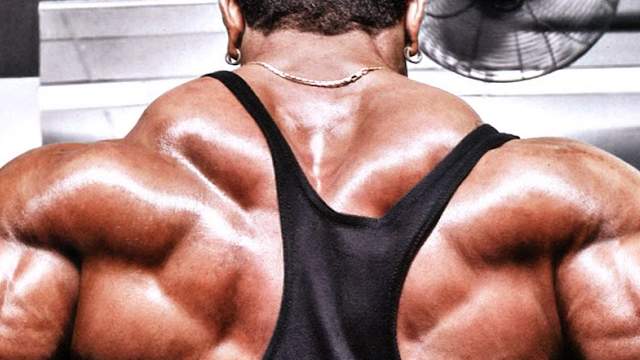In the realm of anatomy, the trapezius or traps is one of the two large muscles that stretch from the occipital bone to the lower thoracic vertebrae then laterally to the spine of the scapula or shoulder blade. It is responsible for moving the scapula and supporting the arm. The following are some exercises a person can do to develop the traps.
Barbell Shrugs
Barbell shrug serves one of the most common exercise for traps development. As per Body Building, the exercise is an isolation pulling exercise for the traps. However, it also engages the shoulders and the arms.
To perform the exercise, the person stands up straight with his feet at shoulder width while holding the barbell with both hands in front of him using a pronated grip. A good practice is to grab the bar slightly wider than the shoulder width. For better grip, wrist wraps can be used. Then, the person raises his shoulders up as far as he can as he exhales; another good practice is to avoid lifting the barbell using force from the biceps. Next, he holds the contracted position for a second and then gradually returns to the starting position as he inhales.
As per the publication, a variant is to rotate the shoulders in a semicircular movement from front to rear. However, it is not advisable for people with shoulder issues. Barbell shrugs also has variants like with the barbell behind the back, with a shrug machine, and a smith machine.
Dumbbell Shrug
Another shrug exercise variant is the dumbbell shrug. According to Men’s Health, it puts less amount of stress on the shoulder joint, as the shoulders are not required to rotate to hold the bar. Its other advantage is the added stability when the person does the movement. As per the publication, the person grabs a pair of dumbbells and allows them to hang at arm’s length next to the person’s sides, with the palms facing each other. Next, the person shrugs his shoulders as high as possible. As per the publication, a key technique in doing the exercise is to try to touch the ears with the shoulders, without engaging other body parts. The person pauses briefly at the top of the contracted position and then gradually lowers the weights back to the start.
Bent-Over Lateral Raise
The bent-over lateral raise primarily targets the shoulder’s rear or posterior deltoid, but is also part of the routines for traps development. According to Muscle and Fitness, the person performs the exercise by holding a dumbbell in each hand, with his knees mildly bent and his back arched forward. Next, he extends his arms out straight to the sides, with his palms facing the torso and with his elbows mildly bent. After that, he raises his arms until the elbows are at shoulder height and his arms are parallel to the floor. A good practice is to bring the shoulder blades close to each other as possible when the arms are raised. Lastly, the dumbbells are gradually lowered to the starting position.
Face Pull
Aside from shoulder training, the face pull is also part of the traps training. As per Muscle and Fitness, the exercise is done by attaching a rope to a cable machine and the person grans the rope with both hands and pulls the weights towards his face. Then, he keeps his upper arms parallel to the ground and his elbows should be higher than his wrists throughout the movement. Finally, the rope is gradually brought back to the starting position.
Overall, a strong pair of traps allow better scapula movement and arm support. Along with the aforementioned exercises, total traps development is accompanied by proper food choices and adequate rest.











